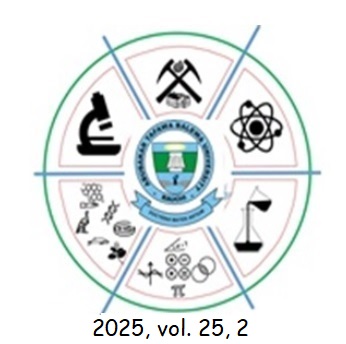Occurrence, Human Health and Risk Assessment of Polycyclic Aromatic Hydrocarbons in Urban Road Dust
Keywords:
Road dust, Polycyclic aromatic hydrocarbons, High performance liquid Chromatography, Methanol extraction, Cancer risk assessmentAbstract
In this study, a cost-effective and environmentally sustainable analytical method was
developed for the detection and quantification of 16 priority polycyclic aromatic
hydrocarbons (PAHs) listed under the U.S. EPA Consent Decree in urban road dust. The
approach employed methanol both as the extraction solvent and as the organic phase in
a methanol–water gradient high-performance liquid chromatography (HPLC) system,
eliminating the need for toxic solvents and minimizing environmental impact. Road dust
samples were collected from various urban settings—including residential, industrial, and
city center areas—and subjected to ultrasound-assisted extraction to enhance PAH
recovery. PAH concentrations in the samples showed significant spatial variation, ranging
from 77 to 1,488.85 µg kg⁻¹ in the city center, up to 2,108 µg kg⁻¹ in residential zones,
and between 138 and 1,409 µg kg⁻¹ in industrial areas. The method demonstrated low
limits of detection (LOD: 0.33–37.98 µg kg⁻¹) and quantification (LOQ: 0.99–22.87 µg
kg⁻¹), along with satisfactory average recovery rates of 69% to 88%. Precision studies
indicated acceptable intra-day and inter-day variability, ranging from 78.91% to 110.43%
and 75.30% to 114.65%, respectively. Health risk assessments based on toxicity
equivalency factors (TEFs), hazard indices (HI), and incremental lifetime cancer risks
(ILCR) revealed that PAH levels in the road dust posed minimal carcinogenic or non
carcinogenic health risks to the exposed population. Source apportionment analysis
suggested that vehicular emissions—particularly from gasoline and diesel combustion—
were the dominant contributors to PAH contamination. This method not only proves to
be an efficient and greener alternative for monitoring PAHs in urban environments but
also holds strong potential for routine environmental assessment in regions affected by
traffic-related pollution.
Downloads
Downloads
Published
Issue
Section
License
Copyright (c) 2025 Journal of Pure and Applied Sciences (Science Forum)

This work is licensed under a Creative Commons Attribution-NonCommercial-ShareAlike 4.0 International License.




